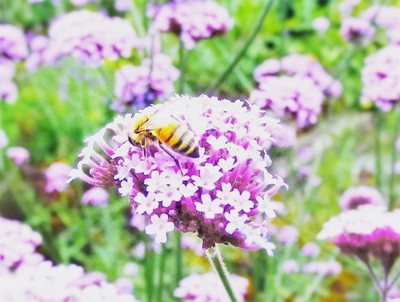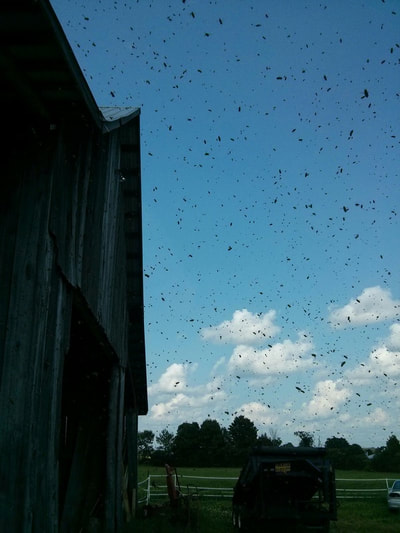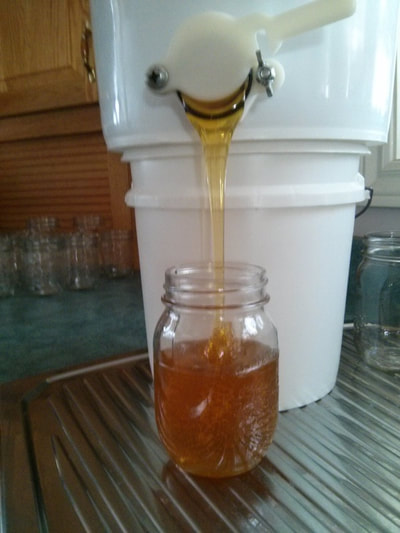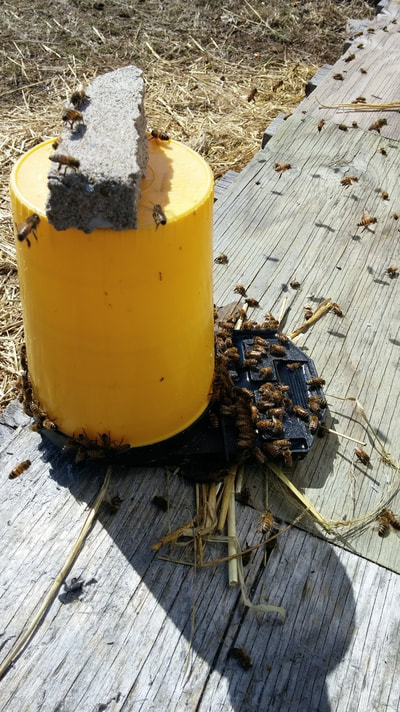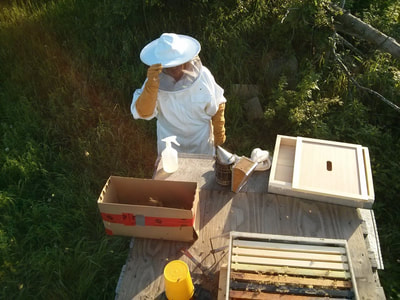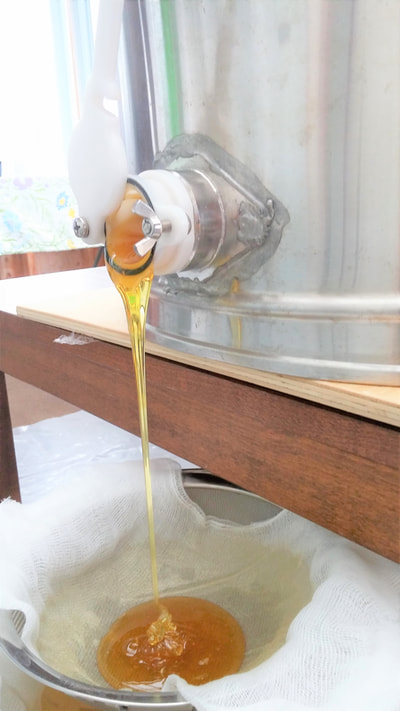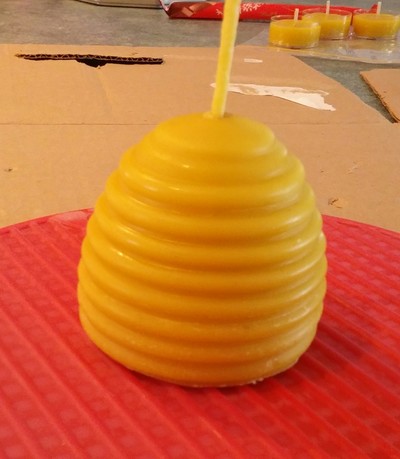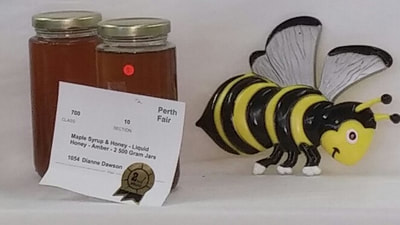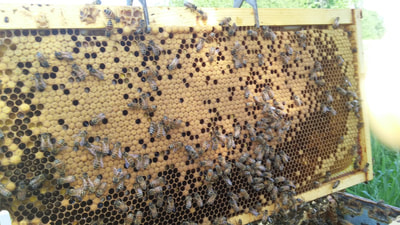Our bees live on our pesticide-free property near Perth, Ontario. The bees collect nectar and pollen from our hay field of alfalfa, clover mixed grasses and wildflowers. The honey is rich in colour, texture, and anti-oxidants. Honey is produced when nectar (from flowers) is gathered by the bees, stored and matured in the hive, and processed carefully by the beekeeper. This process gives each honey its specific flavours, strength or mildness, colour and consistency. Honey is like wine, it may contain a hint of blueberry, for example, all depending on what the bees have been foraging. In Ontario, we are known for our multifloral golden honey which is produced from the nectar of a wide range of flowering plants. When bees first emerge from the hives, they are attracted to the nectar of maples and other budding trees, then move on to dandelions and fruit trees. For Ontario’s 3,000 beekeepers, honey harvest starts in earnest in July and progresses through to September with the honey colour deepening throughout the summer. The deeper the colour, the more minerals can be found in the honey. Clover and canola are the key flowering species in July, while purple asters and goldenrod are the mainstay for August. It’s common for Ontario 100 percent pure honey to be labeled “wildflower” or “summerblossom” because it is derived from so many plant species. For a monofloral honey – nectar transformed from a specific plant species – the hives may be placed in locations such as cranberry bogs, clover fields or blueberry patches to obtain a distinct flavour. A discerning beekeeper can tell by the taste of honey what flowers the bees have been foraging.
Contact us for availability of local honey and beeswax.
For more information about Ontario honey visit: http://www.ontariohoney.ca/
Contact us for availability of local honey and beeswax.
For more information about Ontario honey visit: http://www.ontariohoney.ca/
